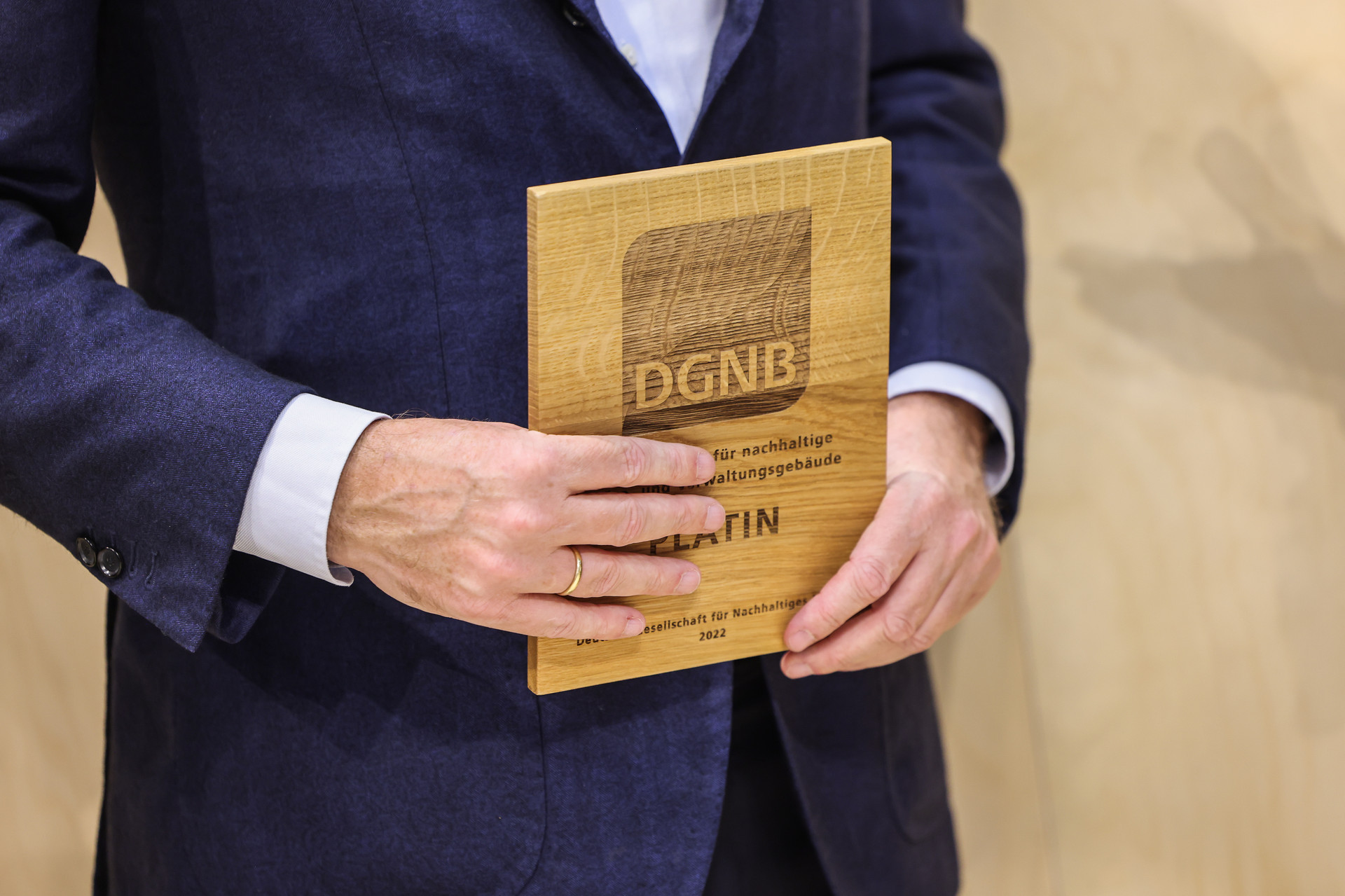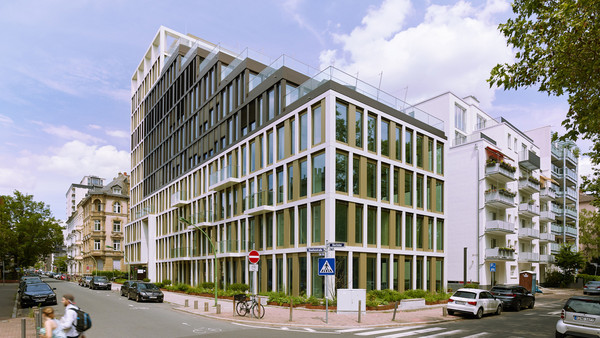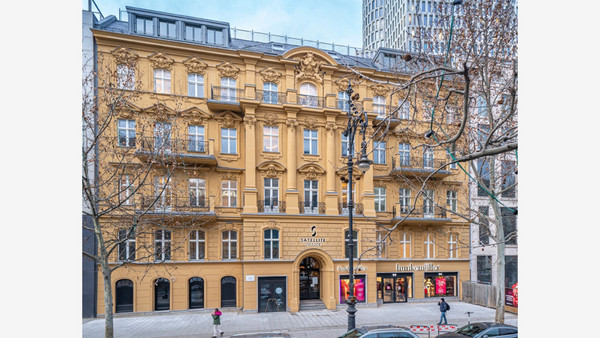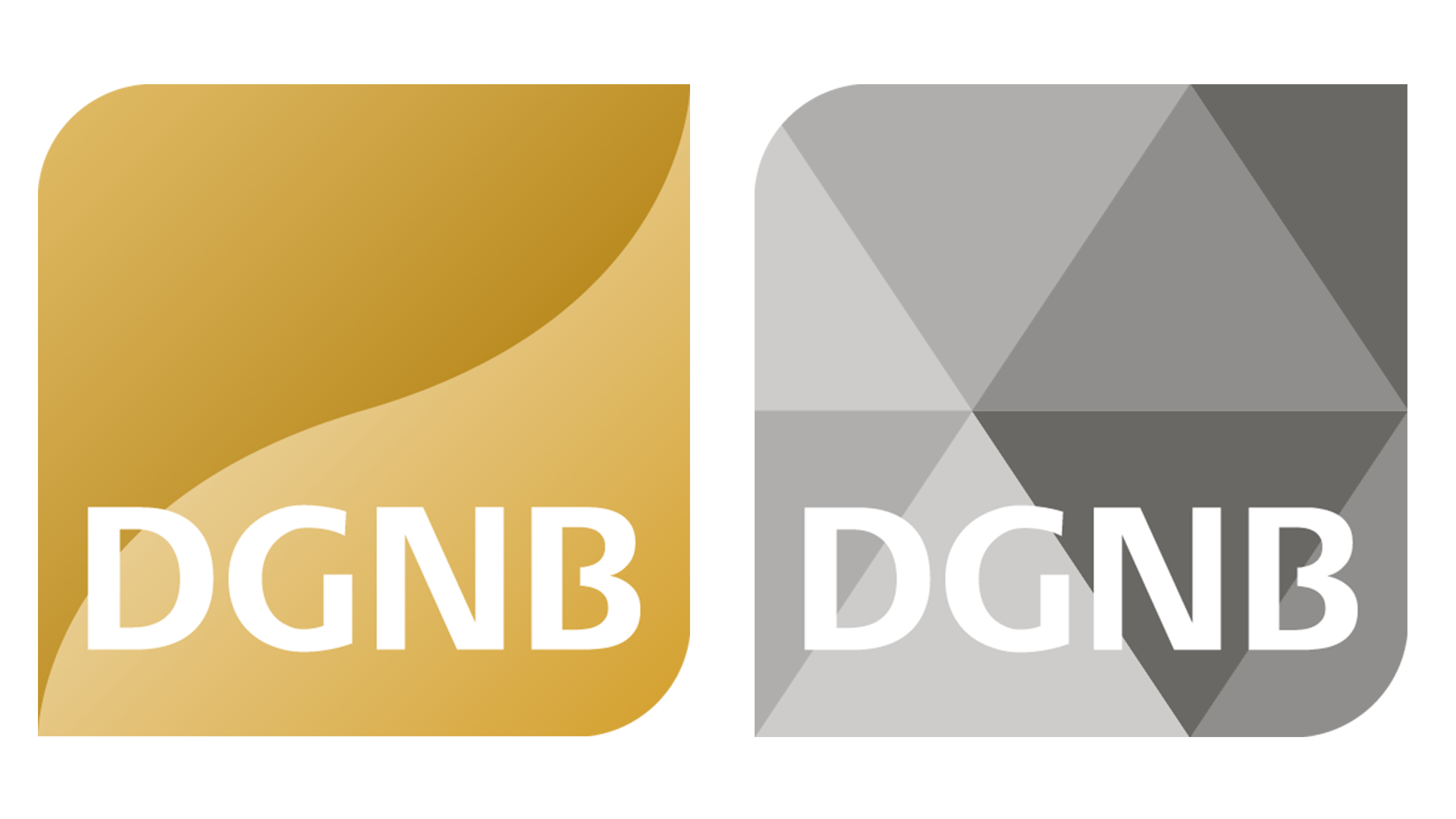The sustainable management of existing buildings is one of the most important tasks of our time. Only if we succeed in exploiting the enormous potential for reducing the CO2 emissions of our existing properties in the best possible way can the envisaged climate action goals be achieved. In addition to measures to increase efficiency in building operation, renovations play a central role here. In particular, properties that currently have enormous deficiencies offer great potential for climate action through renovation and maintenance. This is precisely where the DGNB System for Renovation comes in. As a planning and optimisation tool, it supports the systematic realisation of maximum sustainability quality with a given budget. Please note: Currently, there is no translation of the German criteria set for the renovation of buildings available. The only English version of the DGNB System for Renovation of Buildings available is the DGNB System Renovation of Buildings, Version 2022 International detailed below. It applies to renovation projects in countries where there is no adaption of the DGNB System available.
In order to ensure appropriate handling of the building fabric and to prevent unnecessary demolition, an inventory as the basis for planning is a minimum requirement within the certification. Furthermore, the certification supports a resource-saving remediation of pollutants. Measures to strengthen a circular economy are rewarded in many ways with bonus points. The unsealing of surfaces and the preservation of biodiversity are also promoted in terms of resource protection. The certification also takes into account the special requirements of buildings that are listed.
At the same time, in the sense of a holistic understanding of sustainability, the system also focuses on people with their need for health and comfort as well as the long-term economic viability of the building measure.
DGNB System Small Residential Buildings Renovation / New Construction, Version 2024
Would you like to certify a renovation project in the residential sector with a maximum of twelve units? The DGNB has developed its own system variant for this.
LEARN MORE (IN GERMAN)
- Educational buildings
To the scheme
- Office and administrative buildings
To the scheme
- DGNB Flex
More about DGNB Flex
- Department stores
To the scheme
- Hotels
To the scheme
- Logistics buildings
To the scheme
- Mixed use
To the scheme
- Production buildings
To the scheme
- Shopping centres
To the scheme
- Consumer markets
To the scheme
- Assembly buildings
To the scheme
- Residential buildings (more than 6 residential units)
To the scheme
The DGNB System for Renovation as a planning and optimisation tool is specifically aimed at building owners, municipalities and project development offices that want to implement their renovation measure(s) in a future-oriented way. The certification system is not only suitable for flagship projects.
Climate action in the international DGNB System for Renovation
A special focus of the system is on climate action. This is reflected, among other things, in the fact that the creation of a building-specific Climate Action Roadmap in accordance with the DGNB's Framework for carbon neutral buildings and sites is mandatory in order to be able to obtain a certificate. The most important measures that must be implemented in the following years up to a self-imposed target year in order to systematically lead the property to carbon neutrality are defined in the Climate Action Roadmap.
The Climate Action Roadmap must take into account the last year of previous use. Alternatively, if there is another use after the renovation, an operating forecast must be prepared as a basis. Proof can be provided using the Excel-based CO2 accounting tool or an equivalent tool.
Certification criteria
The DGNB System does not assess individual measures, but the overall performance of a building based on specific criteria. A total of 38 criteria from six topics apply to the DGNB System for Renovation of Buildings, Version 2022 International: environmental quality, economic quality, sociocultural and functional quality, technical quality, processes and site. The topics environmental, economic, as well as sociocultural and functional quality are weighted equally in the evaluation.
The weighting of the individual criteria varies depending on the building type.
The DGNB System for Renovation of Buildings, Version 2022 International is based on the international 2020 version of the system for new construction. Around half of the criteria were adapted to the specific requirements of a renovation measure.
The six criteria of environmental quality allow an assessment of the effects of building renovations on the global and local environment as well as on resource consumption and waste generation.
- Building life cycle assessment (ENV1.1)
- Local environmental impact (ENV1.2)
- Sustainable resource extraction (ENV1.3)
- Potable water demand and waste water volume (ENV2.2)
- Land use (ENV2.3)
- Biodiversity at the site (ENV2.4)
The eight criteria of sociocultural and functional quality help to assess buildings with regard to health, comfort and user satisfaction as well as the essential aspects of functionality.
- Thermal comfort (SOC1.1)
- Indoor air quality (SOC1.2)
- Acoustic comfort (SOC1.3)
- Visual comfort (SOC1.4)
- User control (SOC1.5)
- Quality of indoor and outdoor spaces (SOC1.6)
- Safety and security (SOC1.7)
- Design for all (SOC2.1)
Eight criteria provide a benchmark for assessing the quality of technical execution with regard to relevant sustainability aspects.
- Fire safety (TEC1.1)
- Sound insulation (TEC1.2)
- Quality of the building envelope (TEC1.3)
- Use and integration of building technology (TEC1.4)
- Ease of cleaning building components (TEC1.5)
- Ease of recovery and recycling (TEC1.6)
- Immissions control (TEC1.7)
- Mobility infrastructure (TEC3.1)
The nine criteria of process quality aim to increase the planning quality and the construction quality assurance.
- Comprehensive project brief (PRO1.1)
- Sustainability aspects in tender phase (PRO1.4)
- Documentation for sustainable management (PRO1.5)
- Procedure for urban and design planning (PRO1.6)
- Construction site / construction process (PRO2.1)
- Quality assurance of the construction (PRO2.2)
- Systematic commissioning (PRO2.3)
- User communication (PRO2.4)
- FM-compliant planning (PRO2.5)
Listed buildings (monument protection)
In the spirit of the credo "conservation instead of new construction", the certification also takes into account the special requirements of buildings that are listed. The regulations for dealing with these requirements for listed buildings were taken into account in the following criteria and recorded accordingly:
- ECO2.1 – Flexibility and adaptability (variable indicators 4 and 5.1)
- SOC2.1– Design for all
- TEC1.2 – Sound insulation
- TEC1.3 – Quality of the building envelope
- PRO1.6 – Procedure for urban and design planning
If all technically and economically reasonable measures have already been taken to improve the respective building quality within the framework of requirements for the protection of listed buildings and if, despite these measures, it is not even possible to achieve the limit value of the criterion, it is permissible, e.g. due to a significantly higher quality in other building areas or components, to neglect the building substance or components worth preserving in the assessment. In this case, proof must be provided that the preservation will not have any adverse effects on the health of the user. A justification by the competent monument protection authority and the evidence shall be attached to the "Required Evidence". Such cases must be documented and clarified with the DGNB Certification Body at an early stage prior to project submission.
The certificate
As with the other DGNB Certifications, the DGNB System for Renovation of Buildings, Version 2022 International evaluates according to degrees of fulfilment. The overall degree of fulfilment is calculated from the evaluation of the individual criteria. The highest distinction is the Platinum certificate. From an overall degree of fulfilment of 50 percent, the building receives the DGNB Certificate in Silver. The DGNB Certificate in Gold is assigned for a degree of fulfilment of 65 percent or more. For a DGNB Certificate in Platinum, the project must achieve an overall degree of fulfilment of at least 80 percent.
The DGNB aims to promote a uniformly high quality of buildings. The overall degree of fulfilment alone is therefore not sufficient for a certificate. The degree of fulfilment must also reach a minimum degree of fulfilment in the result-relevant topic areas (with the exception of site quality) in order to receive the respective award. For Platinum, for example, a degree of fulfilment of at least 65 percent is required in the first five topic areas. A degree of fulfilment of at least 50 percent is a prerequisite for a Gold certificate. For Silver, the limit is 35 percent per topic area.
In addition, for projects aiming for Gold or Platinum certification, recognition for outstanding design and architectural quality is also possible through a DGNB Diamond. The award logo is always displayed in combination with the project-specific certification logo to express the interrelationship of the awards. Further information on the DGNB Diamond award can be found here.
Certification requirements
At the time of submission of the certification documents to the DGNB, the completion of the renovation measure or the recommissioning of the building may not be more than three years ago. If certification of a renovation project is intended whose renovation measure or recommissioning dates back more than three years, this must be agreed with the DGNB Office via a project-specific request for certifiability (PAZ) in the DGNB System Software by a DGNB Auditor before the project is registered.
In general, the following minimum requirements apply:
- Indoor air quality (minimum requirements according to the criterion SOC1.2): The criterion for indoor air quality is an exclusion criterion in the DGNB Certification System. A building that does not meet the minimum requirements for indoor air quality in indicator 1 is excluded from certification. Ensuring indoor air quality that does not adversely affect the user is assessed via the indoor air concentration of volatile organic compounds (VOC) (indicator 1) and via the ventilation rate (indicator 2).
- Design for all (minimum requirements according to the criterion SOC2.1): The criterion "Design for all" is an exclusion criterion in the DGNB Certification System. A building that does not meet the respective minimum accessibility requirements is excluded from certification. The criterion is evaluated qualitatively and quantitatively according to the degree of fulfilment of accessibility.
- Comprehensive project brief (PRO1.1): Only the exact knowledge of the building stock enables an appropriate handling of the existing building material, therefore its documentation is important. Objective information about the current structural as-is condition as well as exact plans serve as a basis for further examination and as a basis for further planning – especially with regard to dealing with possible damage to the old building stock or dealing with historic structures.
- Statutory requirements: The legal requirements for the building to be certified must be fulfilled. This also includes fire protection or, if required, a safety concept.
Exceptions are described in the system requirements of the individual DGNB scheme.
- For buildings certified in Germany: Fulfilment of the current requirements of the Building Energy Act (GEG)
- Building-specific Climate Action Roadmap in accordance with the DGNB's Framework for carbon neutral buildings and sites
- In addition, in the case of energy-related renovation: proof of fulfilment of the overall degree of fulfilment of 35 percent of the criteria named in Annex 1
Project registration

To register a project, clients must first hire a DGNB Auditor. This auditor can then register the project. Auditors also accompany the entire process and take over the verification and submission to the DGNB. They are active worldwide and specialise in certain schemes.
Projects can be registered in the current version "Renovation of Buildings, Version 2022 International".
Selected DGNB certified projects

Offices and Administriative Buildings

Mixed Use






